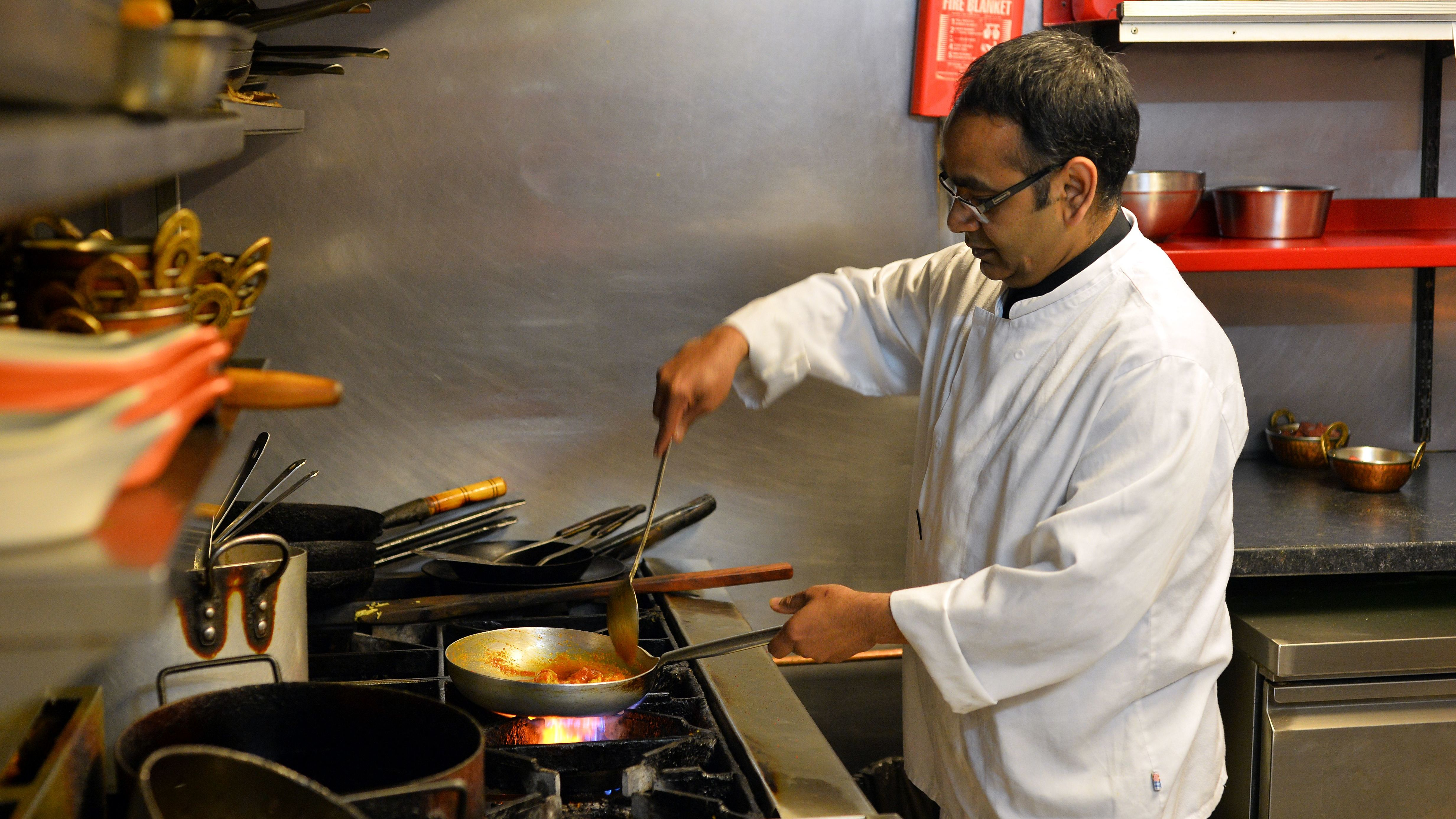A 60-Second Intro To Bangladeshi Food
We may receive a commission on purchases made from links.
This month Facebook released its Big Brother-ish Facebook IQ Annual Topics and Trends Report, which examines trending conversations on the platform and predicts which topics will continue to gain steam in 2018. Among the findings: Americans' discussions of Bangladeshi cuisine grew nearly eight times since January 2016. Ligaya Nishan, Hungry City columnist for The New York Times, recently named Neerob, a Bangladeshi restaurant in the Bronx, one of her top 10 restaurants of 2017. But what is Bangladeshi food, and what separates it from its relative, Indian cuisine?
To find out, we contacted Colleen Sen, author of Feast and Fasts: A History of Food in India and an expert in South Asian cooking. Keeping in mind the country's varied regional food preparations, she gives us an overview of flavors and dishes you'd find on a typical Bangladeshi restaurant in America. Most of those, by the way, are located in New York (Jackson Heights, Queens, specifically) and Houston, both of which have high concentrates of Bangladeshi immigrants.

For starters, the rice and bread so common at Indian restaurants are also a major component of Bangladeshi food, but with slight differences. Whereas an Indian restaurant would typically serve basmati rice, Bangladeshi eateries tend to serve standard white rice. Additionally, Bangladeshi breads typically are made of white wheat flour, not whole wheat flour like Punjabi or Northern Indian breads; a staple is luchi, a deep-fried, puffy flatbread.
Fish also features heavily on Bangladeshi menus, especially lake and river fish. Halsi, a small and oily mackerel-like fish, is a sought-after dish, often served fried. Carp is common as well. Any type of fish might be fried in mustard oil, a typical cooking medium.

Like Indian cuisine, Bangladeshi food can be spicy or mild, depending on the specific dish and the chef preparing it. The regional equivalent of garam masala is panch phorom, which means "five spice" and originates in West Bengal. It consists of cumin seed, fenugreek, fennel, black mustard seeds, and nigella, a black, crunchy seed that some say tastes like toasted onions.
Because Bangladesh is a majority Muslim country, unlike Hindu-dominated India, beef features more prominently on its menus than those of Indian restaurants. There are still lots of vegetarian dishes, though, because average residents of Bangladesh often cannot afford meat as a component of all their meals. One way Bangladeshi restaurants often prepare meat is called rezala curry, a spicy yogurt-marinated meat dish that's white in color and can be made with chicken, beef, or lamb.

Sen says her favorite dish, though, is Mughlai paratha, a white flour paratha (a kind of flatbread also typical of India) filled with a spiced egg mixture, sort of like an omelet. Then the bread is rolled, fried, and sliced, so it resembles a quesadilla or crepe.
Finally, no Bangladeshi meal would be complete with dessert. Bangladesh is known for its sweet tooth, and Sen says its desserts are considered as refined as French pastry. Milk is the base for many of them, as it is with Indian desserts. But instead of cooking the milk down, Bangladeshis separate it into its curds and whey, then soak the whey in sugar. Mishti doi is a sugared yogurt dessert Sen says she can't get enough of; it's custardlike and can be seasoned with cardamom.
All of this sounds intoxicating to me, and I'd love to jump on what is apparently a wave of interest in this South Asian cuisine. But with most of the Bangladeshi restaurants in the U.S. clustered in just a couple cities, I'll have to wait for my next East Coast vacation.
